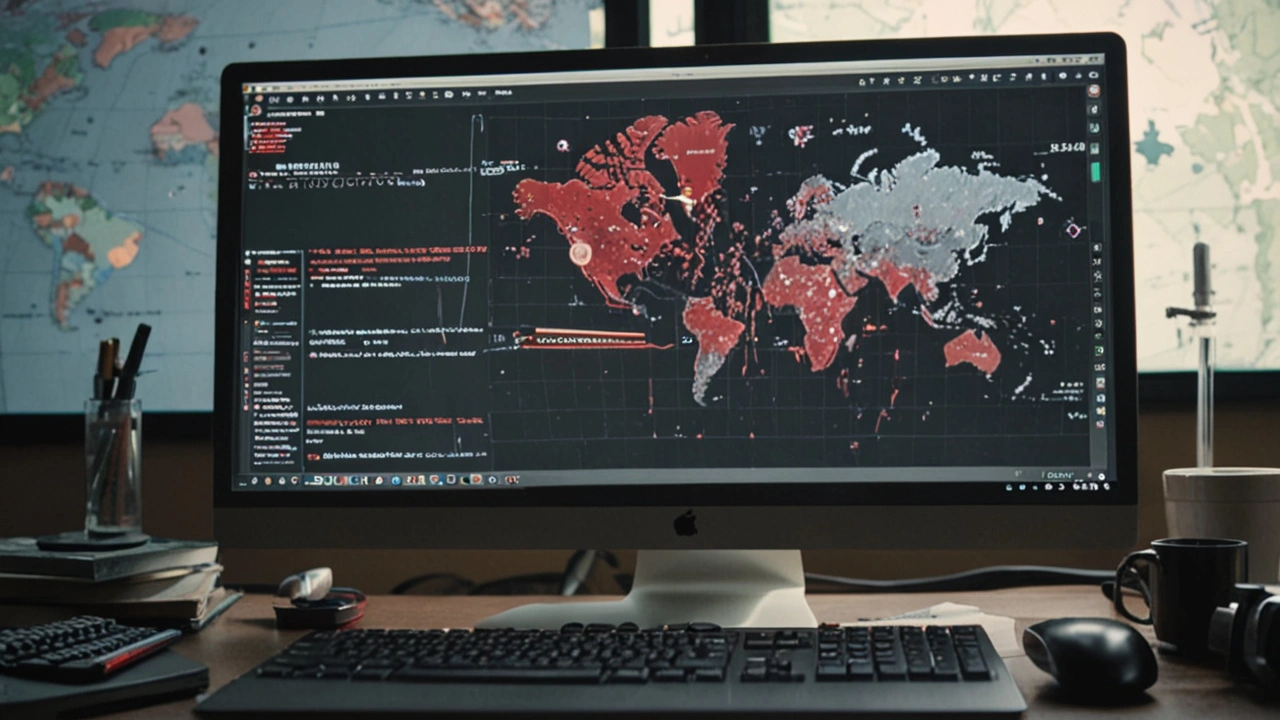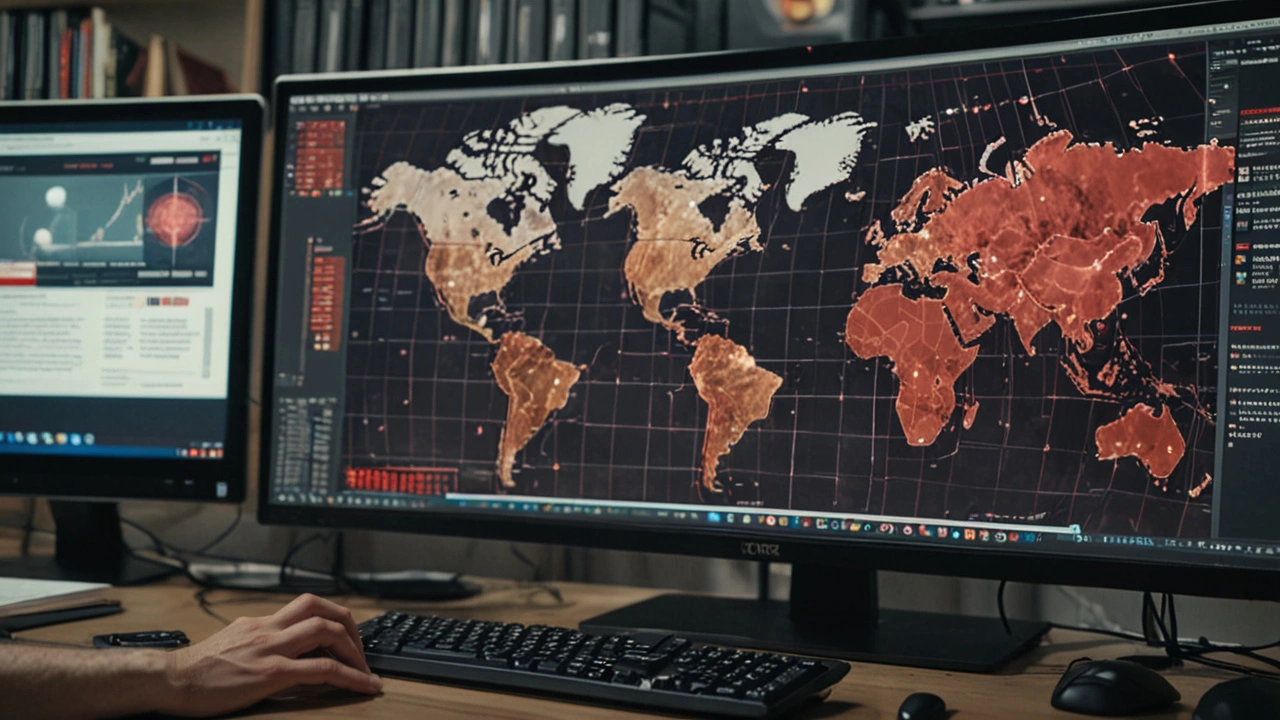Propaganda has been a tool of influence for centuries. In recent years, the methods of spreading misinformation have become increasingly sophisticated. The digital age has greatly amplified the reach and impact of such content.
Enter ChatGPT. This AI tool isn't just for chatbots; its advanced language processing capabilities can identify patterns and anomalies in text, making it a powerful ally in the fight against propaganda.
In the real world, ChatGPT could assist in scanning social media posts, news articles, and other content to flag potential misinformation. Using ChatGPT in this way provides a more proactive approach to media literacy.
To wrap up, we'll go over some practical tips on how you can personally spot propaganda, making the internet a safer space for everyone.
- The Evolution of Propaganda
- ChatGPT's Capabilities
- Real-World Applications
- Tips for Spotting Propaganda
The Evolution of Propaganda
Propaganda is an age-old method of influence. It dates back to ancient times when leaders and kings used decrees and proclamations to shape public opinion. For example, in ancient Rome, emperors would commission poets to write favorable verses, making sure their legacy was glorified. These early efforts laid the groundwork for more sophisticated methods employed in later centuries.
In the 20th century, propaganda took on new forms and reached unprecedented levels of sophistication. During World Wars I and II, both the Allies and Axis powers used propaganda extensively. Posters, films, and even radio broadcasts were designed to boost morale at home and demoralize the enemy. In World War I, the British government established the Ministry of Information to control the flow of information and manage public perception. The infamous “Uncle Sam” poster, designed to recruit American soldiers, remains one of the most iconic images of wartime propaganda.
The advent of television in the mid-20th century brought yet another dimension to propaganda. Governments and interest groups could now reach millions of people simultaneously. The Vietnam War showcased the power of televised propaganda, as shocking images from the front lines sparked widespread anti-war sentiment. This period also saw the rise of “spin,” where political figures and media experts would manipulate facts to sway public opinion. An important aspect of understanding modern propaganda is recognizing how it evolves with technology.
In the 21st century, the internet and social media have revolutionized propaganda techniques. The speed at which information travels means that propaganda can spread like wildfire. During the 2016 U.S. presidential election, social media played a pivotal role in disseminating misinformation. False news stories were shared millions of times, and bots were used to amplify messages, creating an echo chamber effect. The proliferation of “deepfake” technology—videos manipulated to make people appear to say things they never did—adds another layer of complexity to modern propaganda.
The Digital Age
The digital age has not only sped up the dissemination of propaganda but also diversified its forms. Today, propaganda is not just about patriotic posters or manipulated news headlines. Memes, videos, and even seemingly innocent social media posts can carry subtle persuasive messages. A study by the University of Oxford found that organized social media manipulation campaigns were active in 70 countries in 2020. State actors, private firms, and even individuals now have the tools to conduct comprehensive propaganda campaigns from the comfort of their homes.
For instance, Russia's Internet Research Agency has been accused of orchestrating wide-ranging social media campaigns aimed at influencing political events in other countries. These campaigns often involve creating fake personas, posting divisive content, and engaging with legitimate users to spread disinformation. The goal is to create confusion and division, making it harder for people to distinguish truth from fiction.
"Propaganda must be centralized, regulated, and organized from above. The masses must be simultaneously affected only by a few propaganda agencies." — Adolf Hitler
The Role of AI in Propaganda Detection
With the complexity of modern propaganda, detecting and combating it requires advanced tools. AI, particularly natural language processing models like ChatGPT, can analyze vast amounts of text and recognize patterns that might indicate propaganda. Traditional methods of detecting propaganda focused on analyzing the content's source, style, and intent. AI can go further by examining subtle linguistic cues and cross-referencing data from multiple sources in real-time.
For example, an AI system can scan thousands of social media posts, identify common themes, and flag those that show signs of coordinated efforts. This helps researchers and analysts quickly zero in on potential propaganda campaigns. The ability to process and analyze text at scale distinguishes AI from manual analysis, which can be time-consuming and prone to human error.

ChatGPT's Capabilities
ChatGPT is not just another chatbot. Developed by OpenAI, this advanced language model has shown a remarkable ability to understand and generate human-like text. One of its most impressive features is its capacity for contextual analysis. This means ChatGPT can examine the context surrounding a piece of text to determine its intent and accuracy, which is vital in identifying propaganda.
Another significant capability of ChatGPT is its pattern recognition. Patterns in language, such as repeated phrases or specific word choices, are often indicators of propaganda. ChatGPT can sift through vast amounts of data quickly, recognizing these patterns more efficiently than a human ever could. By analyzing these patterns, ChatGPT can flag content that may be attempting to manipulate public opinion.
ChatGPT also leverages its advanced natural language processing (NLP) abilities. NLP allows the AI to understand not just the words themselves, but the nuances and subtleties of how they're used. This is crucial when it comes to detecting propaganda because it often relies on subtle cues and dog whistles that might not be obvious at first glance. According to a study from the University of Cambridge, approximately 62% of misinformation relies on subtlety, which makes these tools indispensable.
Moreover, ChatGPT has the power of continuous learning. Every interaction it has can make it a little bit smarter, a little bit better. This isn't just about quantity but quality as well. By learning from new data sources constantly, ChatGPT can stay up-to-date with the latest tactics in misinformation.
"AI tools like ChatGPT have the potential to revolutionize our approach to detecting and combating misinformation," says Dr. Emily Li, a leading researcher in AI ethics.
But perhaps one of the most practical capabilities of ChatGPT in propaganda detection is its integration with existing platforms. Whether it's social media, news websites, or even internal communication tools within organizations, ChatGPT can be embedded to monitor and flag suspicious content in real time. This makes it a proactive tool in the fight against misinformation.
To put it in perspective, imagine a world where every questionable tweet, misleading news headline, or biased article is flagged and reviewed before it spreads. ChatGPT makes this vision more attainable. It's not just about catching false information but about preemptively stopping it from reaching an unsuspecting audience.
Finally, ChatGPT is versatile. It's adaptable to various languages and cultural contexts. Propaganda is a global issue, and having a tool that can be effective across different regions is invaluable. Whether it's fake news in the US, misleading political ads in Europe, or state-sponsored misinformation in other parts of the world, ChatGPT can help level the playing field.
In summary, ChatGPT’s capabilities in context analysis, pattern recognition, NLP, continuous learning, real-time integration, and versatility make it an exceptional tool for detecting propaganda. Though not a silver bullet, it represents a significant advance in our ability to combat the spread of misinformation effectively.

Real-World Applications
ChatGPT is often thought of as a tool for conversation and customer service. However, its potential goes far beyond that. One significant real-world application is in the domain of propaganda detection. This AI can assist in identifying misleading or outright false information in a variety of contexts, helping to maintain the integrity of the information we consume.
For instance, social media platforms are notorious for the rapid spread of misinformation. Using ChatGPT, these platforms can scan posts and comments for common propaganda techniques such as exaggerated claims, emotionally charged language, or suspicious links. By doing so, the AI can flag content before it reaches a wide audience, essentially nipping misinformation in the bud. According to a study by MIT, false news stories are 70% more likely to be retweeted than the truth, making early detection crucial.
News agencies are another domain where ChatGPT can shine. Journalists are overwhelmed with a constant influx of information, making it difficult to verify every piece of news immediately. ChatGPT can serve as an initial filter, identifying stories that require further scrutiny. For example, during the 2020 US elections, a significant amount of false information was circulated online. AI could help differentiate between legitimate and fake news, allowing journalists to focus their efforts where they are most needed.
Government agencies can also benefit from this technology. Public health organizations, for example, during the COVID-19 pandemic, faced the challenge of debunking rumors and fake cures. ChatGPT can streamline the process by scanning websites and social media for dangerous misinformation and sending alerts to relevant authorities. This proactive step can help prevent public panic and ensure people receive accurate, life-saving information.
Educational institutions are exploring ChatGPT as a tool for teaching critical thinking and media literacy. Students can use the AI to analyze various texts, identifying potential biases or misleading information. By practicing with this tool, students become more adept at spotting propaganda in their daily lives. As Carl Miller from the Centre for the Analysis of Social Media says,
In the fight against misinformation, technology like ChatGPT can level the playing field, offering everyone the chance to become a fact-checker.
Lastly, non-profit organizations involved in fact-checking can leverage ChatGPT to manage their workload efficiently. Many of these organizations are small and underfunded, making it challenging to review every claim. With ChatGPT, they can automate part of the process, focusing human resources on more complex cases. A collaborative effort between AI and human reviewers can significantly enhance accuracy and reach.

Tips for Spotting Propaganda
Spotting propaganda in today's digital age is crucial to maintaining a well-informed society. With the barrage of information we receive daily, it's essential to develop a keen eye for identifying biased or misleading content. Here are some practical tips to help you navigate and scrutinize the information you come across.
One of the most significant indicators of propaganda is a strong emotional appeal. Content that stirs up strong emotions, whether it's anger, fear, or joy, is often designed to bypass rational thinking. Take a moment to step back and assess the information critically. Is the content trying to manipulate your feelings? High emotional engagement can sometimes cloud your judgement, making it easier for misinformation to be accepted as fact.
Check the sources. Reliable information often comes from credible and well-established sources. If you come across an article or post, do a quick background check on the author or publication. Is the source known for its unbiased reporting? Cross-referencing the information with other reliable sources can also help verify its authenticity. A known fact is that trusted news sources generally adhere to strict journalistic standards.
Recognize the use of loaded language and buzzwords. Words with heavy connotations and double meanings can suggest a biased perspective. Propaganda often uses exaggerated language to make situations seem more drastic or favorable, depending on the agenda. By being aware of these linguistic tricks, you can better judge the neutrality of a piece of content.
"Propaganda thrives on deception and half-truths. It preys on ignorance and fear. Developing a skeptical mindset is crucial for separating fact from fiction.” – Noam Chomsky
Pay attention to the visual elements. Images and videos can be powerful tools for spreading propaganda. Be wary of content that uses striking visuals to elicit an immediate emotional response. Again, take a moment to think critically about the media and its context. Perform a reverse image search to see if an image has been taken out of context or manipulated to fit a particular narrative.
Another effective tip is to beware of overly simplistic explanations. Real-world issues are often complex and multifaceted, but propaganda tends to present them in black-and-white terms. When you encounter simple solutions to complicated problems, it's a red flag that the content might be oversimplified to push a specific agenda. Taking the time to research and understand the nuances of an issue can help you see through these simplistic narratives.
Be cautious of information overload. Sometimes, propaganda tactics involve bombarding an audience with a flood of information to overwhelm them. This technique can make it difficult to discern true information from falsehoods. Taking breaks and consuming information at a manageable pace allows you to digest and analyze facts more effectively.
It is also helpful to join fact-checking communities. Sites like Snopes, FactCheck.org, and PolitiFact are dedicated to verifying claims and debunking false information. Being an active member of such communities can keep you updated on current misinformation trends and provide reliable insights into the veracity of various claims.
In summary, spotting propaganda requires a mix of skepticism, critical thinking, and proactive fact-checking. By being aware of emotional manipulation, checking sources, analyzing language, scrutinizing visuals, avoiding oversimplification, managing information intake, and relying on fact-checking resources, you can effectively navigate the sea of information and maintain a clear, unbiased perspective.





